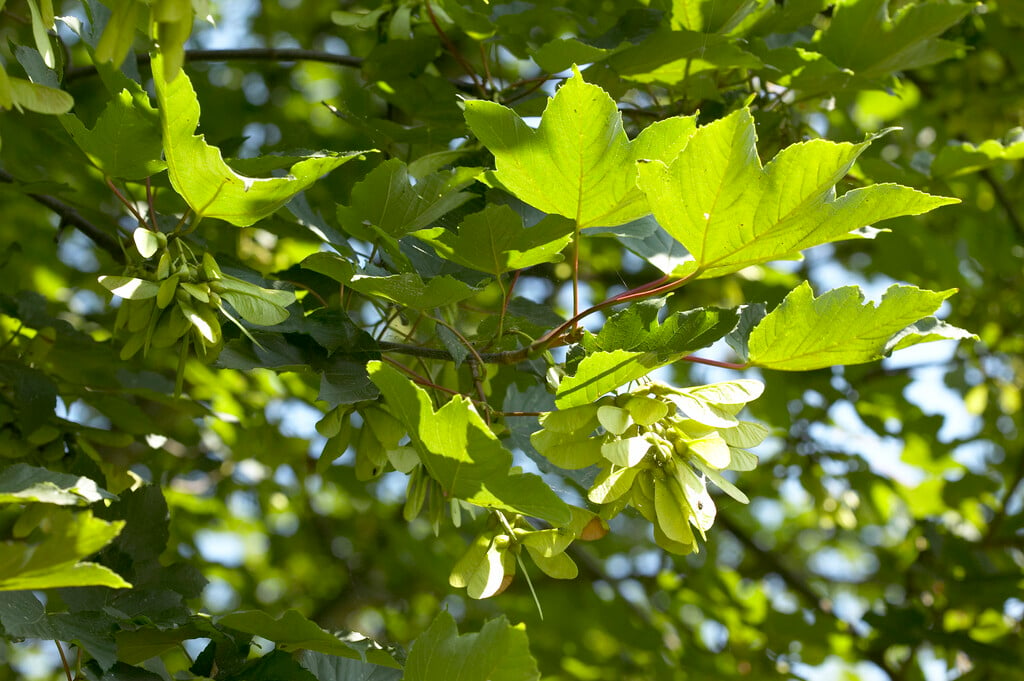Acer pseudoplatanus 'Negenia'
sycamore 'Negenia'
A vigorous deciduous tree, to around 25m high, with a conical habit and large, lobed, dark green leaves held on red stalks. Small yellow-green flowers are produced in spring, followed later by typical winged seeds

Buy this plant
Size
Ultimate height
Higher than 12 metresTime to ultimate height
20–50 yearsUltimate spread
Wider than 8 metresGrowing conditions
Moisture
Moist but well–drained, Well–drainedpH
Acid, Alkaline, NeutralColour & scent
| Stem | Flower | Foliage | Fruit | |
| Spring | Yellow Green | Green | ||
|---|---|---|---|---|
| Summer | Green | |||
| Autumn | Green Yellow | |||
| Winter |
Position
- Full sun
- Partial shade
Aspect
East–facing or North–facing or South–facing or West–facing
Exposure
Exposed or Sheltered Hardiness
H7Botanical details
- Family
- Sapindaceae
- Native to GB / Ireland
- No
- Foliage
- Deciduous
- Habit
- Columnar upright
- Genus
Acer can be deciduous trees or large shrubs with paired, often palmately-lobed leaves and small flowers followed by characteristic winged fruits. Many have fine autumn colour, and some have ornamental stems
- Name status
Accepted
How to grow
Cultivation
Tolerates most soils and positions, often used as a street tree due to its fairly uniform habit of growth. Some drought and pollution tolerance once established. See tree cultivation for further advice
Propagation
Propagate by grafting
Suggested planting locations and garden types
- Architectural
- Coastal
- Wildlife gardens
- Low Maintenance
Pruning
Minimal pruning required; see pruning group 1
Pests
May be susceptible to gall mites, aphids, caterpillars and scale insects, including horse chestnut scale
Diseases
May be susceptible to tar spot, verticillium wilt and honey fungus
Get involved
The Royal Horticultural Society is the UK’s leading gardening charity. We aim to enrich everyone’s life through plants, and make the UK a greener and more beautiful place.